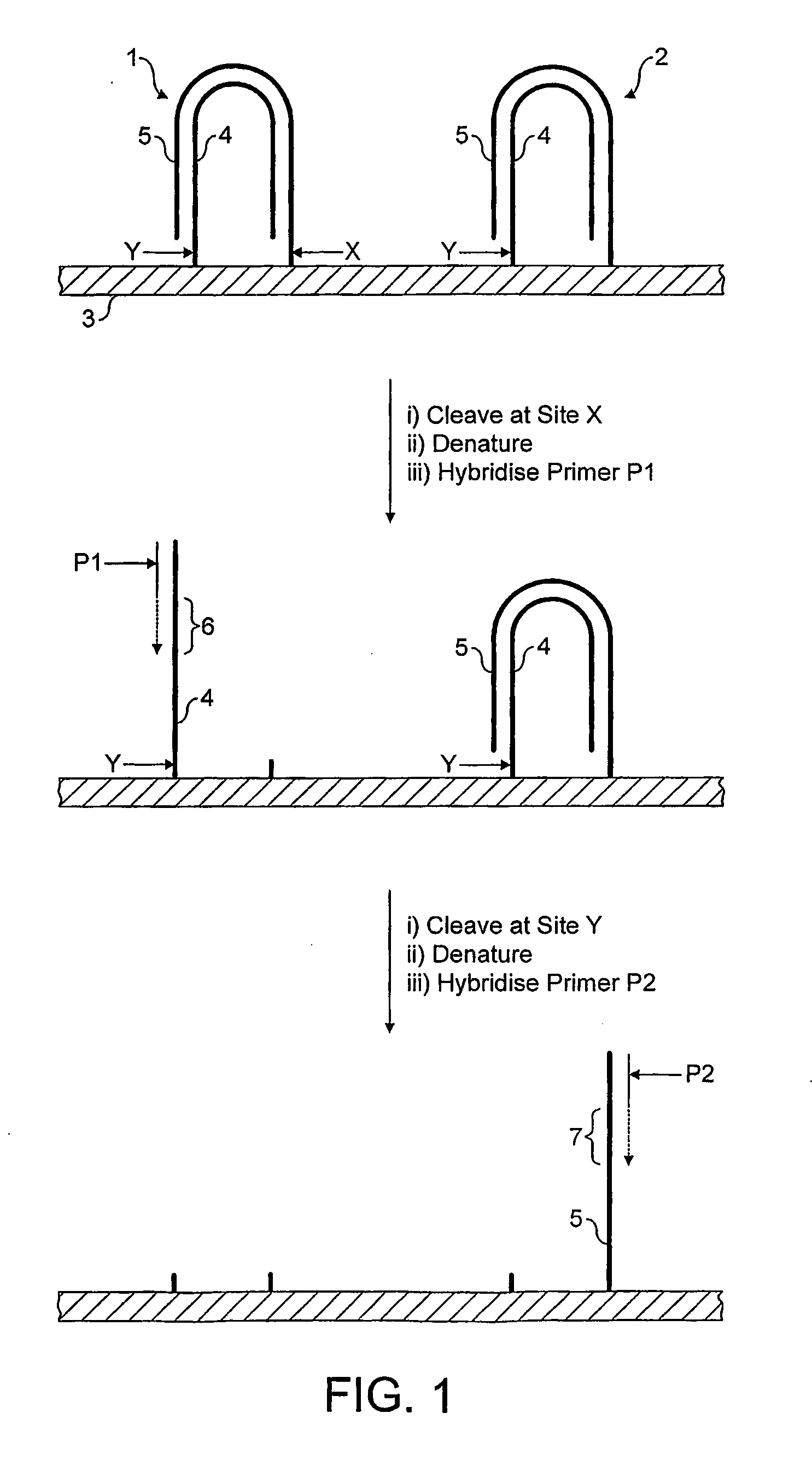Method for Sequencing a Polynucleotide Template
a polynucleotide template and pairwise sequencing technology, applied in the field of pairwise sequencing of double-stranded polynucleotide templates, can solve the problems of limited sequence data that can be reliably obtained with the use of sequencing-by-synthesis techniques, particularly nucleotides, and requires time-consuming cloning
- Summary
- Abstract
- Description
- Claims
- Application Information
AI Technical Summary
Problems solved by technology
Method used
Image
Examples
example
[0131]The following are examples of general techniques which may be applied in carrying out the method of the invention.
Acrylamide Coating of Glass Chips
[0132]The solid supports used are typically 8-channel glass chips such as those provided by Micronit (Twente, Nederland) or IMT (Neuchâtel, Switzerland). However, the experimental conditions and procedures are readily applicable to other solid supports.
[0133]Chips were washed as follows: neat Decon for 30 min, milliQ H2O for 30 min, NaOH 1N for 15 min, milliQ H2O for 30 min, HCl 0.1N for 15 min, milliQ H2O for 30 min.
Polymer Solution Preparation
[0134]For 10 ml of 2% polymerisation mix.[0135]10 ml of 2% solution of acrylamide in milliQ H2O[0136]165 μl of a 100 mg / ml N-(5-bromoacetamidylpentyl) acrylamide (BRAPA) solution in DMF (23.5 mg in 235 μl DMF)[0137]11.5 μl of TEMED[0138]100 μl of a 50 mg / ml solution of potassium persulfate in milliQ H2O (20 mg in 400 μl H2O)
[0139]The 10 ml solution of acrylamide was first degassed with argon ...
PUM
| Property | Measurement | Unit |
|---|---|---|
| temperature | aaaaa | aaaaa |
| chemical | aaaaa | aaaaa |
| chemical cleavage | aaaaa | aaaaa |
Abstract
Description
Claims
Application Information
 Login to View More
Login to View More - R&D
- Intellectual Property
- Life Sciences
- Materials
- Tech Scout
- Unparalleled Data Quality
- Higher Quality Content
- 60% Fewer Hallucinations
Browse by: Latest US Patents, China's latest patents, Technical Efficacy Thesaurus, Application Domain, Technology Topic, Popular Technical Reports.
© 2025 PatSnap. All rights reserved.Legal|Privacy policy|Modern Slavery Act Transparency Statement|Sitemap|About US| Contact US: help@patsnap.com



